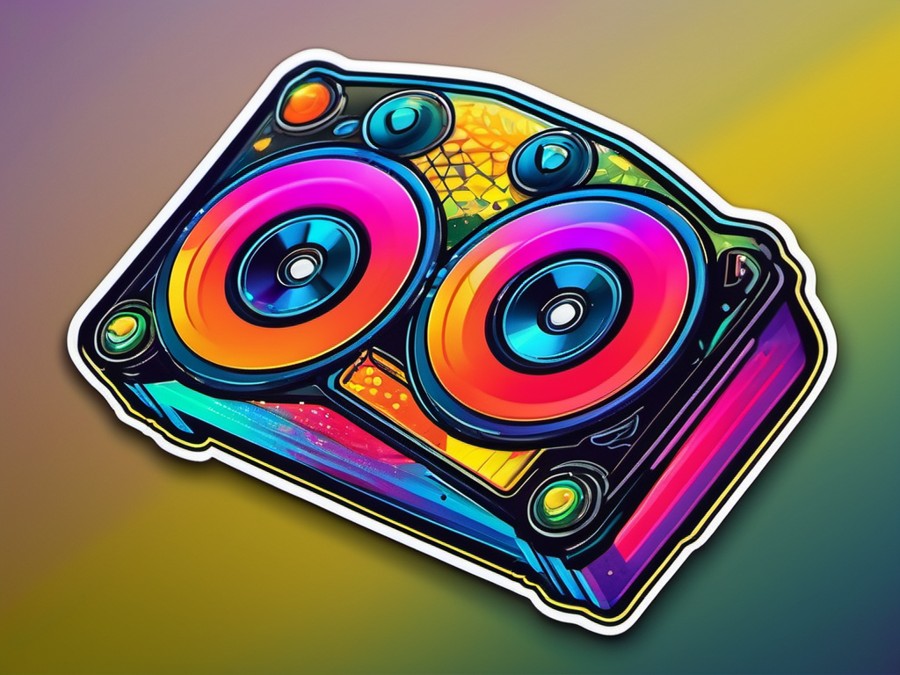· Charlotte Will · Marine Stereos · 7 min read
What is the Best Way to Install a Marine Stereo?
Learn step-by-step how to install a marine stereo like a pro, enhance your on-water experience with clear audio, and ensure longevity in harsh marine environments. Follow this detailed guide for smooth installation, safety tips, and troubleshooting common issues.

Ever wondered how you can elevate your on-water experience to the next level? Upgrading your boat’s audio system with a marine stereo is an excellent place to start. Installing a new marine stereo isn’t just about enhancing the music; it’s also about ensuring that you have a reliable system that can withstand the harsh marine environment. But where do you begin? Let’s dive into a step-by-step guide to help you install your new marine stereo like a pro.
Why Upgrade Your Boat’s Audio System?
Enhance Your On-Water Experience
A marine stereo isn’t just an accessory; it’s a game-changer. Picture this: you’re cruising along the coast, the sun is out, and your favorite tune is playing in the background. The soundtrack to your journey sets the mood, making every moment on the water memorable. Upgrading your boat’s audio system can transform a simple outing into an unforgettable adventure.
Moreover, a good marine stereo comes with features tailored for the open sea, such as waterproofing and durability. Whether you’re into fishing, watersports, or just leisurely sailing, a marine stereo adds that extra layer of enjoyment.
Choosing the Right Marine Stereo for Your Boat
Size Matters: DIN Sizes
Before you start, ensure that the stereo fits in your boat’s dash. The standard size for most marine stereos is Double DIN, which measures about 7 inches tall. However, if your boat has a smaller space, you might need to opt for a Single DIN stereo, which is about 2 inches tall. Double-check the dimensions to avoid any installation hiccups.
Waterproofing: Essential for Marine Audio
Since you’re dealing with a boat, waterproofing is non-negotiable. Look for stereos that are certified with an IPX rating, which indicates resistance to water. IPX6 and above are typically good choices for marine environments, ensuring your stereo can handle splashes and moisture.
Connectivity Options: Bluetooth, Aux, USB
Modern marine stereos offer various connectivity options. Bluetooth is a must-have for seamless music streaming from your phone or other devices. Aux inputs are useful for connecting older devices, while USB ports can be handy for playing music directly from a flash drive.
If you’re interested in more advanced features, some marine stereos come with built-in AM/FM tuners and support for satellite radio. Ensure your chosen stereo meets all your connectivity needs.
Gathering the Right Tools for Installation
Stereo Installation Kit: A Must-Have
A marine stereo installation kit is crucial. These kits usually include wiring harnesses, mounting hardware, and sometimes even a faceplate adapter. Having the right kit will make your installation smoother and more straightforward.
Additional Tools You Might Need
Depending on your boat’s setup, you may need additional tools:
- Screwdrivers: Both Phillips and flathead.
- Wire strippers/cutters.
- Crimping tool (if you need to attach new connectors).
- Zip ties or cable clips for securing wires.
Before You Begin: Safety First
Disconnecting the Boat’s Power Supply
Safety is paramount when dealing with electrical systems. Before you start any work, disconnect the boat’s power supply at the main fuse box or battery. This step prevents any accidental shorts or electrical mishaps during the installation process.
Step-by-Step Guide to Install Your Marine Stereo
Removing the Old Head Unit (If Applicable)
If you’re replacing an old stereo, the first step is to remove it. Use a DIN tool to release the head unit from its mounting bracket, then carefully remove it from the dash. Unplug any wiring harnesses connected to it.
Using a DIN Tool
A DIN tool is essential for removing the stereo without damaging it. It fits into the small holes on either side of the stereo, allowing you to release it from its mount.
Preparing the Stereo Faceplate
Some marine stereos come with detachable faceplates that you can remove for easier installation. If yours has one, unscrew and set it aside until the stereo is mounted.
Installing the Wiring Kit
With the old stereo out of the way, it’s time to install your new wiring kit. Connect the power and ground wires to the battery, ensuring a secure connection. Then, run the speaker wires to their respective locations.
Power and Ground Wires
Ensure the red wire (positive) is connected to the positive terminal on your battery, and the black wire (negative/ground) is securely connected to a metal part of your boat’s frame or the engine block.
Speaker Wires
Speaker wires are typically color-coded. Match the colors to their respective terminals on your speakers for proper polarity.
Mounting the Stereo Faceplate
With the wires connected, mount the stereo faceplate to the dash. Use the provided hardware to secure it in place. Make sure it’s level and firmly attached.
Securing the Marine Stereo
Finally, place your marine stereo into its mounting bracket and secure it with the provided screws. Once in place, plug in all the wiring harnesses and reattach any faceplates if they were removed.
Connecting Speakers and Other Peripherals
Speaker Wires: Color-Coding Matters
Ensure you connect the speaker wires correctly, following the color-coding. This step is crucial for proper sound reproduction and preventing any shorts or blown speakers.
Adding Subwoofers or Amplifiers
If you plan to add subwoofers or an amplifier, connect their respective wires according to the manufacturer’s instructions. This step might require additional wiring and power management, so be sure to review the user manual for your specific setup.
Testing Your New Marine Stereo
Powering Up the Boat
With everything connected and secured, reconnect your boat’s power supply. Turn on the stereo and test all functions, including Bluetooth connectivity, USB ports, and any other features you have.
Troubleshooting Common Issues
If something isn’t working as expected, double-check all connections. Ensure that power and ground wires are securely fastened and that speaker wires are correctly color-coded. If you’re still having issues, consult the stereo’s user manual for troubleshooting tips.
Frequently Asked Questions About Marine Stereo Installation
Can I Install a Car Stereo on My Boat?
While it’s possible, car stereos aren’t designed to withstand the marine environment and lack features like waterproofing that marine stereos have. For better longevity and performance, it’s best to stick with a marine-grade stereo. Learn more about the differences here.
My Speakers Aren’t Working. What Should I Do?
Ensure that the speaker wires are connected correctly and that the polarity is right. If the speakers still don’t work, there might be an issue with the stereo itself or a wiring problem. Double-check all connections and consult your stereo’s manual for further troubleshooting steps.
Can a Marine Stereo Be Installed by Someone with No Experience?
With patience and careful attention to detail, yes, it’s possible. Follow this guide step-by-step and don’t hesitate to seek help from a professional if you encounter problems. Many boat owners successfully install their marine stereos with no prior experience.
What Size Wrench Do I Need for a Marine Stereo Installation?
The size of the wrench needed can vary depending on the hardware provided with your stereo. Typically, an 8mm or 10mm wrench will suffice for most mounting screws. Always check the hardware kit that comes with your stereo to be sure.
How Do I Protect My New Stereo from Rust?
Regularly inspect your stereo for any signs of moisture or corrosion. Use protective sprays designed for marine electronics to safeguard against rust. Ensuring proper waterproofing and keeping your stereo clean will also help extend its lifespan.
Conclusion: Enjoy Your Upgraded Marine Audio System
Installing a marine stereo is more than just a technical task; it’s an opportunity to enhance your boating experience. By following this comprehensive guide, you’ll ensure a smooth installation process and enjoy crystal-clear audio on the water.
Don’t forget to test all features thoroughly and troubleshoot any issues that arise. With the right tools, patience, and attention to detail, you’ll have your marine stereo up and running in no time.
Happy boating!




